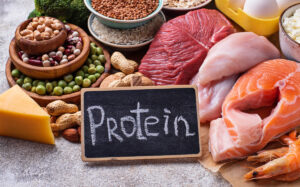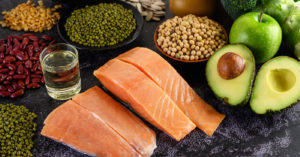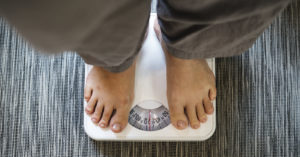Are you doing intermittent fasting correctly? Our Intermittent fasting (IF) calculator calculate your meal timings, macros and daily supplementation details.
Macro Split
Rest Day
Training Day
Timings
Fasted Training
First meal
Second meal
Third/Last meal
Pre-workout meal
Training
Post-workout meal
Pre-workout meal
Training
Second/Last Meal
Key Points
10g BCAA or 30g Whey
Post-workout meal
First meal
Post-workout meal
Second meal
Pre-workout meal
Last meal
Multi-vitamin
Fish-oil
Vitamin D
Calcium
The past cannot be changed. The future is yet in our power.
Let's do this.
What is intermittent fasting?
Over the past few years, intermitting fasting (IF) has gained massive popularity and continues to do so today.
Despite the emergence of new diet trends every year, IF managed to stay on top of the list, which is mainly attributed to the general concept behind this diet.
You see, when you’re intermittent fasting, you won’t have to starve yourself or cut out major macronutrients from your diet. Instead, you just need to eat in a periodic fashion during the day.
In simpler terms, IF allows its followers to eat unrestrictedly during a specific time-window, then fast for the rest of the day.
While the idea behind this diet may seem simplistic, the positive health benefits it provides are concretely undeniable.
Here, we will cover all you need to know about intermittent fasting, including the common patterns of eating, the major positive effects to expect, and macro tracking.
Different intermittent fasting plans
The 5:2 plan
This pattern divides the week into two separate periods:
- A 2-day fasting phase, where your caloric intake must be limited to 500 calories in 24 hours.
- The rest of the week (5 days), during which you’ll get back a normal diet.
Keep in mind that the two days of fasting must be separated by at least one non-fasting day. Experts also recommend loading up with complex carbohydrates and fiber to prolong satiety and prevent feelings of hunger.
Alternate day fasting
Similar to the previous plan, alternate-day fasting is a day-by-day shift. In other words, you will be fasting one day, then go back to your normal diet the next day.
In a sense, it is more of a 3:4 or 4:3 plan.
For beginners, it’s not recommended to start with this pattern since you’ll be fasting half of the week. The caloric intake during fasting is also set at 500 calories in 24 hours.
The 16:8/14:10 plan
This plan is by far the most popular as it’s easier to adapt by beginners.
As the name implies, the two time-windows of fasting and non-fasting are divided by the hours, where you will fast for 16 hours and then eat for the next 8.
The main reason for the popularity of this approach is the fact that you are already fasting for 8 hours a day when you sleep.
All you have to do is wait for 8 hours before getting your first meal. To make it easier for you, start fasting 4 hours before your bedtime, and you will only have to fast for an extra 4 hours when you wake up.
While people often ask about the calories and type of food allowed during the 8-hour window, intermitting fasting’s main concept revolves around not imposing caloric or food choice restrictions. With that being said, moderation is always recommended.
As for the 14:10 plan, it is exactly identical to the 16:8 plan, with the major difference being the extended eating period by 2 hours.
If you have never been on a diet before, the 14:10 plan might be a good place to start.

The whole-day fasting plan
The whole-day fasting approach is advanced and falls into the extreme side of intermitting fasting.
You see, this plan mandates a 24-hour fasting period without any caloric intake, which can put a toll on the body if done in an unorganized fashion and/or excessively.
Signs and symptoms of tissue starvation may include lethargy (tiredness), myalgia (muscle pain), headaches, and extreme feelings of hunger.
Despite the potential risks, this plan gained significant traction due to the substantial weight loss associated with it.
The major health benefits of intermittent fasting
Weight loss
Obviously, the main reason people opt for intermitting fasting is to lose weight at a fast pace. When researchers studied the mechanisms that led to weight loss, they found that it’s a multifactorial process that includes caloric deficit, efficient hormonal regulation, and reduced insulin resistance.
Furthermore, the basal metabolic rate (BMR) increased dramatically, which is a crucial element for people who want to lose weight.
If you are not familiar with BMR, it is a parameter that doctors use to estimate the number of calories needed to maintain the function of internal organs.
This number is subject to several factors, including age, gender, body type, diet, exercise, and genetics.
Most diets that advocate for severe caloric deficit leads to the slow down of BMR, which decreases the rate of weight loss. You can think of intermittent fasting as the exception to this rule.

Decreased insulin resistance
Several studies found that intermitting fasting improves insulin sensitivity and helps in the regulation of blood sugar levels.
These findings are extremely important since IF could be beneficial for patients with type 2 diabetes or those with irregular glycemia.
It is important to note that our understanding of the underlying physiology is limited, which warrants conducting more research before recommending IF to diabetic patients.
Reduction in oxidative stress
Our organism is rich in compounds known as reactive oxygen species (i.e., free radicals) that disintegrate the membranes of bacteria, viruses, and fungi.
Free radicals are crucial to our survival, but they have one fatal downside: these compounds cannot differentiate between our tissues and foreign pathogens.
In other words, if the number of reactive oxygen species exceeds that of antioxidants, the body will be under attack from the inside.
For this reason, our cells came up with a clever system to neutralize free radicals before they wreak havoc on our organs.
By keeping a steady storage of antioxidants that are ready to interfere with oxidation at any time, the free radicals are not as damaging anymore.
In one study, researchers concluded that intermittent fasting significantly reduces the number of reactive oxygen species, which alleviates the state of oxidative stress. Many believe that this is the driving mechanism that makes IF effective against cardiovascular disease.
Improved cardiovascular health
Coronary artery disease (CAD) is an umbrella term used to describe a wide range of conditions that affect the heart. This disease is responsible for 17.9 million deaths every year.
The pathophysiology of CAD involves the irreversible occlusion of the major blood vessels that supply the heart. Consequently, the myocytes (heart cells) are deprived of oxygen and glucose, leading to fatal arrhythmias and tissue necrosis (cellular death).
Throughout the years, scientists were able to pinpoint some of CAD’s risk factors, which include:
- Advanced age
- Obesity
- High LDL
- Low HDL
- Blood hypertension
- Diabetes
- Smoking
The good news is that intermittent fasting corrects several of these risk factors, leading to a dramatic decrease in CAD incidence.
Decreased risk of some cancers
Cancer is a debilitating malady that takes millions of lives annually. This pathology is characterized by the uncontrolled growth of cells that destroy the surrounding tissues and cause necrosis.
Intermitting fasting on laboratory animals showed promising results that indicate the efficacy of this diet in slowing down or even halting the growth of tumor cells. However, further research is warranted.
What is macro tracking?
Macro tracking refers to accounting for the macronutrients you’re consuming on a daily basis. This concept is extremely popular in the fields of nutrition and fitness.
To get a sense of how to track your macros, we first need to tackle the major nutrients, which include:
- Carbohydrates (provide the body with the necessary energy)
- Lipids (provide the building blocks for our cells)
- Protein (ensures biochemical and structural functions)
The primary goal of tracking your macros is to follow a ratio that allows you to reach a certain goal in as little time as possible.
Despite how simple the concept may seem, many people find macro tracking to be confusing, especially in the beginning.

Is macro tracking beneficial during intermittent fasting?
As stated above, IF does not interfere with the ratio of macronutrients you are allowed to eat, but rather focuses on narrowing down your eating time-window.
For instance, if you want “to cut”, IF can be quite beneficial since it promotes satiety and suppresses the production of hunger hormones.
Before you decide to track your macros while following IF, it might be a good idea to familiarize yourself with both concepts to avoid any unnecessary adverse effects.
In other words, if you have been tracking your macros for a while, it won’t be a problem to also add intermitting fasting to the mix.
To make things easier for you, we programmed an intermittent fasting calculator to provide you with all the information you need for optimal results.
FAQ
So what is intermittent fasting?
Intermittent Fasting or IF is eating regime that involved cycles of fasting and eating.
Is intermittent fasting safe for everyone?
Fasting is certainly beneficial for healthy individuals, but if you have any existing medical condition we strongly advise you to check with your doctor first.
How to do intermittent fasting?
You can use our IF Calculator to know your Rest & Workout day Macros, Meal and Training Timings, Calories and Supplementation details etc.
How does intermittent fasting work?
In fasting our body can burn fat after glycogen stores have been used for fuel and this can improve insulin sensitivity and reset the metabolism.
Will fasting cause any muscle loss?
Fasting can cause muscle loss, that is why it’s very important to do proper exercise and eat high protein diet.
Takeaway message
intermittent fasting is a fantastic diet that carries a myriad of health benefits when followed with good dietary choices and regular physical activity.
Hopefully, this article helped you appreciate the value of intermittent fasting and encouraged you to start losing weight.
Don’t forget to use our awesome intermittent fasting calculator to maximize your gains and prevent side effects.
If you still have questions regarding this topic, please don’t hesitate to ask in the comment section below.








